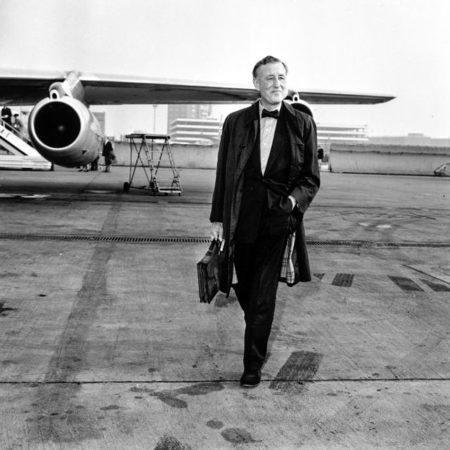One of the things that has made it so fun to research these various World War II stories is how, after a while, people and their stories begin to overlap. In other words, you find various individuals showing up in multiple events connected by other participants or just being within the same orbit. One of these human “conduits” was Ian Fleming (1908−1964), the author of the James Bond novels.
During World War II, Fleming was a commander in the Royal Naval Volunteer Reserve (same rank and naval group as James Bond). He worked for The Admiralty in the Naval Intelligence Division as Rear Admiral John Godfrey’s personal assistant (codename: “17F”). Fleming had all of his fingerprints on military operations such as Mincemeat, Ruthless, and Goldeneye. While primarily an administrator, from time-to-time, Fleming was used as a field agent. Once, he was assigned to follow one of the British double agents working to deceive Hitler into thinking that Pas-de-Calais would be the Allied target for the invasion of Europe. (click here to read the blog, The Double Cross System). Fleming’s wartime experiences provided a plethora of ideas that show up in his Bond novels (click here to read the blog, Explosive Rats) including the ingenious devices used by Bond.
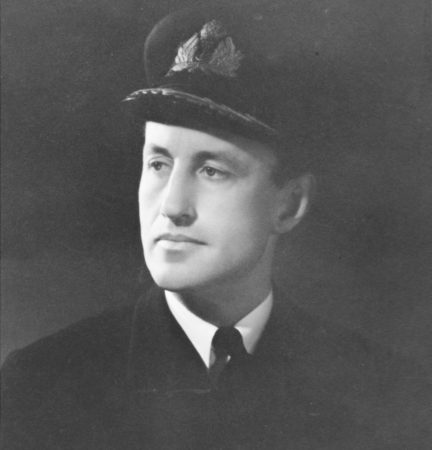
After the war, Fleming bought property in Jamaica (birthplace of the fictional James Bond) and named it GoldenEye. In early 1952, Fleming began to write his first spy novel, Casino Royale, wherein the reader is introduced to James Bond. While Fleming likely based some of his characters on singular persons, many of them were composites of multiple people Fleming knew during his military career. This certainly applies to 007.
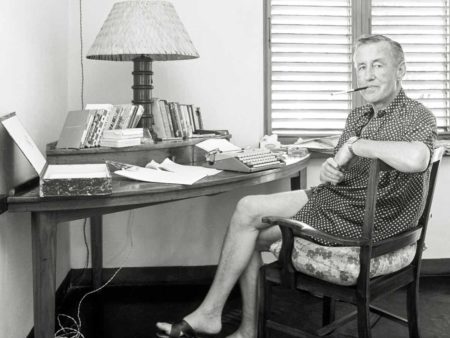
Did You Know?
Did you know the stone testicles from the sphinx on Oscar Wilde’s tomb in Père Lachaise were chiseled off and stolen by two English women in 1961? The sixty-year-old conspiracy theory that refuses to die is the stones were saved and used as a paperweight by successive cemetery curators. Not so, says Benoît Gallot, the current curator of Père Lachaise. He says, “When I took up the job, of course I searched my office for the object of this castration, went through all the cupboards … I found nothing; no trace of this ‘relic’.”
The tomb is known for hundreds of red lipstick marks left by women (perhaps men as well?) after kissing the limestone monument. Sculpted by Jacob Epstein between 1908 and 1912 when it was completed, it features a naked winged angel based on 9th-century Assyrian bulls seen by Epstein in the British Museum. (Maybe it was to honor Wilde’s poem, The Sphinx?) Epstein was known for sculpting erotic features and Wilde’s tomb was no different.
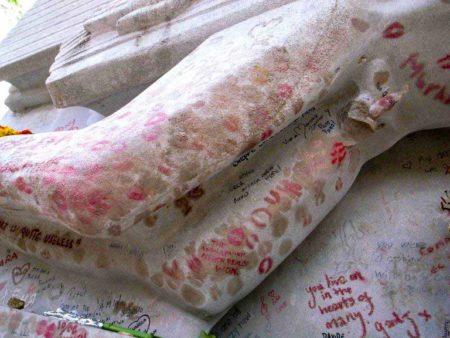
When the sculpture was revealed to the public on 1 June 1912, there were probably some people gasping for air. The artist had sculpted very large male genitals in a very prominent location of the monument. (Sort of like right in your face.) After the monument was transported to France, it was rejected. The Préfet de la Seine was horrified at the sculpture’s genitalia, and he had the tomb covered with a tarp and assigned a police officer to guard it around-the-clock. When Epstein pleaded with the officer, he was told, “The tomb is under arrest.” Eventually a compromise was reached. The tarp would be removed only after a bronze plaque in the shape of a butterfly was placed over the offending stone appendages. By World War I, the French had more important things to deal with. The bronze butterfly was stolen and not replaced.
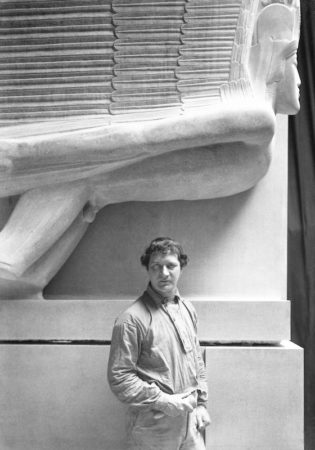
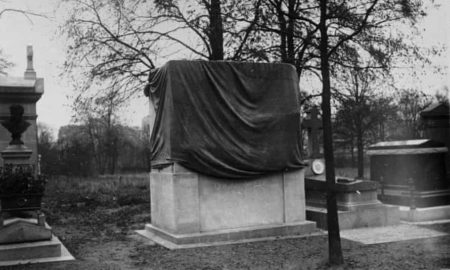
Today, Wilde’s tomb stands near the graves of Edith Piaf, Sarah Bernhardt, and Jim Morrison. By the 1990s, kissing the statue became the rave and Oscar’s grave was suddenly the most visited site in Père Lachaise. Today, there is a clear plastic barrier to prevent people from kissing the monument. I think they’ve removed all the lipstick (the oils were damaging the stone). The lipstick isn’t the only thing missing.
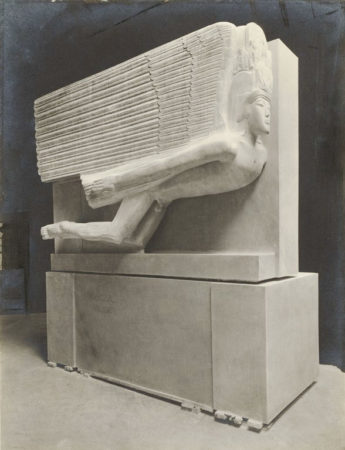
Casino Royale and Vesper Lynd
Fleming published his first book, Casino Royale, on 13 April 1953 in the U.K. with the cover designed by the author. The book introduced James Bond and his many idiosyncrasies. It was the story of how Bond was sent to bankrupt Le Chiffre, treasurer of a French union and member of the Soviet Union secret service. Vesper Lynd was assigned by M to accompany Bond on the mission. However, both British agents were captured with Bond being tortured by Le Chiffre. Without revealing too much of the plot, Bond ends up in the hospital and Lynd visits him every day to give 007 a quantum of solace. Once released, Bond and Lynd begin an affair. One morning, Bond wakes up and discovers Lynd has committed suicide. Leaving a note to Bond, she explains her dilemma and why she killed herself (she led a double life and came from Russia with love).
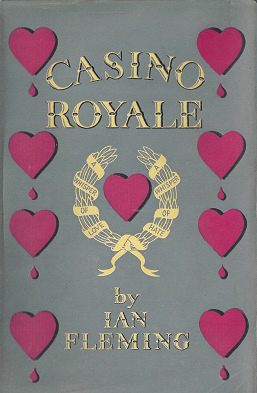
There were several adaptations of Casino Royale including two movies. The first was a 1967 spy parody starring David Niven (as Bond) and co-starring Woody Allen, Orson Welles, and Peter Sellers. The storyline doesn’t follow the book in any way. Lynd is played by Ursula Andress who starred in the first Bond movie, Dr. No (1962). In this movie, Lynd was a retired multi-millionaire former spy hired by Bond to recruit a professional gambler. Eventually, Bond sees through Lynd’s charade. For Bond (and his movies), it always seems tomorrow never dies.
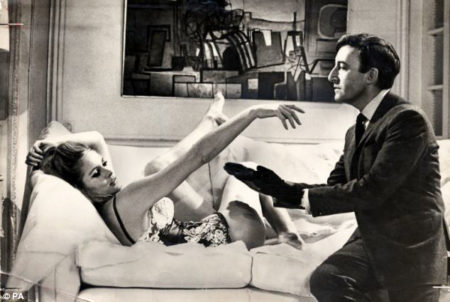
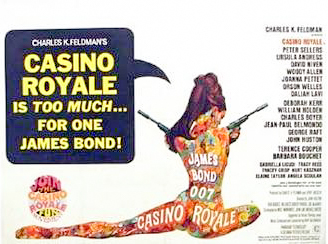
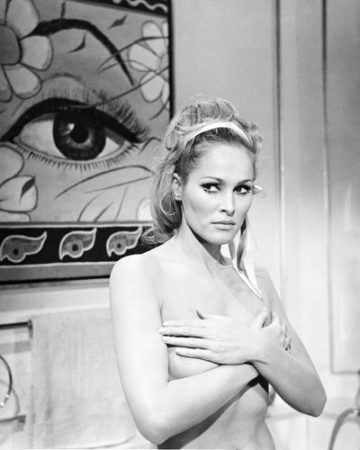
The second movie was released in 2006 and stars Daniel Craig as 007. It follows the basic premise of Bond’s mission to bankrupt Le Chiffre at the gaming tables. Lynd, portrayed by Eva Green, is the British treasury agent assigned to protect the $10 million buy-in money “lent” to Bond. (Did Bond keep the money after winning the bet on the golf game against Auric Goldfinger?) After lots of action in and around the casino wherein Bond had the living daylights kicked out of him, the two are captured and tortured by Le Chiffre. Afterward, they end up in the hospital and Bond falls in love. Alas, MI6 alerts Bond that Lynd has betrayed him but in the ensuing battle between Bond and the bad guys, Vesper Lynd dies another day proving you only live twice.
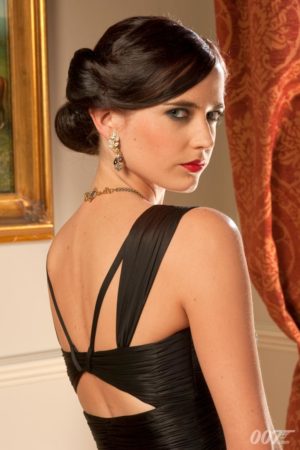
Christine Granville
Who did Ian Fleming base the character of Vesper Lynd on?
Maria Krystyna Janina Skarbek (1908−1952) was a Polish agent working for the British-led Special Operations Executive (click here to read the blog, Women Agents of the SOE). She was born into an aristocratic Warsaw family and was the second child of Count Jerzy Skarbeck and his Jewish wife, Stefania. Maria became an expert horse rider as well as downhill skier. She even managed to be runner-up in the 1938 Miss Poland beauty contest.
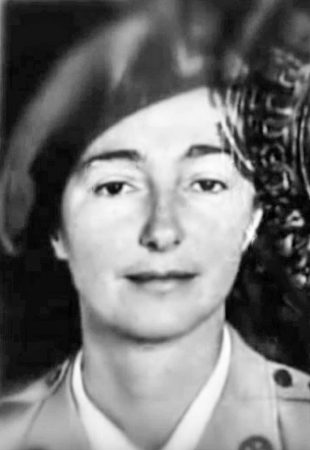
Krystyna married Jerzy Giżycki (1889−1970) in 1938 and when war broke out a year later, the couple left Poland and relocated to France. (They quickly separated and were divorced in 1946.) Maria sailed for England in October 1939, and she immediately approached British authorities to offer her services to fight the Germans. Initially rebuked, Krystyna used her contacts to obtain an interview with the Secret Intelligence Service (SIS). In a written SIS report, she was described as a “flaming Polish patriot, expert skier, and great adventuress” and “absolutely fearless.”
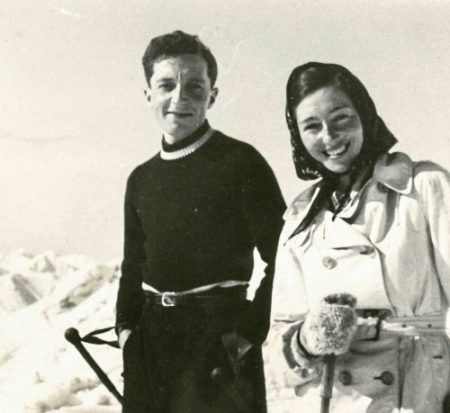
One of her first assignments was to travel to Hungary where she left to enter Nazi-occupied Poland. Krystyna tried, unsuccessfully, to persuade her mother to leave. Stefania refused and two years later, the Gestapo arrested her. (Stefania perished in the Warsaw ghetto.) While in Hungary, Krystyna met up with Andrzej Kowerski (1912−1988), a Polish army officer (nom de guerre: Andrew Kennedy) who was collecting intelligence for London. They teamed up to organize a system of Polish couriers and at the request of SIS (MI6), the two agents ran the surveillance of all rail, road, and river traffic on the borders of Romania and Germany.
Luck ran out for Krystyna in January 1941 when she and Kowerski were arrested by Hungarian police and turned over to the Gestapo. By faking pulmonary tuberculosis, they were released and fled Hungary. A month later, Krystyna and Kowerski were in Bulgaria where they turned over microfilm to a British diplomat containing photos of German military build-up on the Soviet border. Three months later, Hitler invaded the Soviet Union. Traveling across Turkey, Syria, Lebanon, Mandatory Palestine (click here to read the blog, British Mandate), and on to Cairo, Egypt, they arrived at SOE offices under quite a bit of suspicion. For various reasons, the two of them were suspected of being German spies by the Polish intelligence.
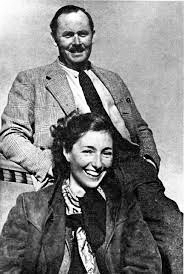
In June 1941, Krystyna and Kowerski were dismissed by the SOE. Kowerski eventually made up with the Poles and resumed his intelligence work. Krystyna was kept on the SOE payroll albeit for very little pay. For the next two years, Krystyna was given small but rather insignificant assignments. However, Krystyna was “rehabilitated” after joining the British “First Aid Nursing Yeomanry” (FANY) that was used as a cover for the women who joined the SOE as agents. Krystyna (now known as Christine Granville) was accepted for SOE training and upon completion, Christine was sent into occupied France. It was around the time of the Normandy and Dragoon invasions of France (click here to read the blog, We’ll Meet Again) and Christine began to work with French guerilla resistance units known as the maquis.
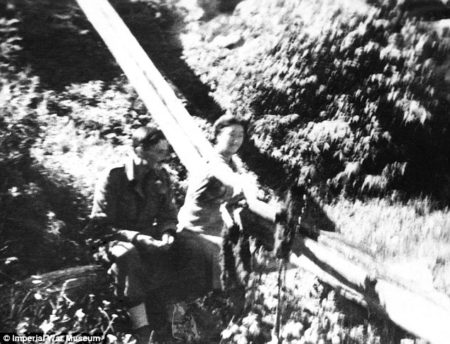
The Spy Who Loved Me?
Christine parachuted into Vercors, France in early July 1944 and joined the SOE Jockey circuit. Jockey was led by Francis Cammaerts (1916−2006) and the circuit’s mission was to organize French resistance fighters, support the maquis, and weaken the German positions. Christine replaced Cecily Lefort (1899−1945) who had been captured and eventually executed at KZ Ravensbrück (click here to read the blog, The White Buses and here to read The Rabbits of KZ Ravensbrück). It was during the next few months that Christine’s legacy would be imbedded in SOE lore and make her one of Churchill’s favorite SOE agents.
One of Christine’s responsibilities was to organize the nightly reception committees to collect the canisters dropped by Allied aircraft. On 14 July 1944, seventy-two B-17s provided the war’s largest single-day airdrop to the maquis. (It was a day drop as opposed to the normal night drops.) Eight days later, German troops crushed a large uprising by the maquis on the Vercors Plateau, but Cammaerts and Christine escaped and set up a new base at Seyne-les-Alpes. Three weeks later, Christine was responsible for the surrender of 150 Germans to the maquis in a fortress on the Franco-Italian border. In mid-August, Cammaerts was arrested along with other resistance agents by the Gestapo and taken to the Digne-les-Bains prison. Christine followed and met with a local man who acted as liaison between the French and the Gestapo. Demanding he release the prisoners, she introduced herself as Cammaerts’s wife and niece of Gen. Bernard Montgomery. Christine offered two million francs for the release of the men and several days later, the SOE air dropped the money. This earned her a meeting with the Gestapo officer who had the authority to release the men. After much discussion, the prisoners were marched out of the prison and into a car that took them to freedom. Afterward, Christine was amazed at what she had done but then again, the spectre of death for these brave agents never crossed their minds.
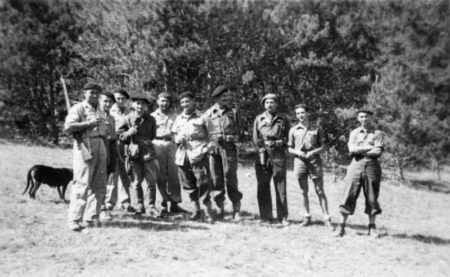
Christine left France after the liberation and returned to London. She prepared to be dropped into Poland in early 1945 but the mission was scrubbed. Christine left FANY to join the “Women’s Auxiliary Air Force” (WAAF) and she remained in the WAAF until the end of the conflict in Europe. Unfortunately, like most other women who fought in the war, Christine was left without any money, a home she could not return to (Poland), and the prospect of finding only menial jobs. (I wouldn’t consider this an honorable way to treat someone who had been awarded the British George medal, an OBE, and the French Croix de Guerre.) However, after surviving the Nazis and the dreaded Gestapo, Christine Granville’s fate seven years later was decided in a London hotel lobby.
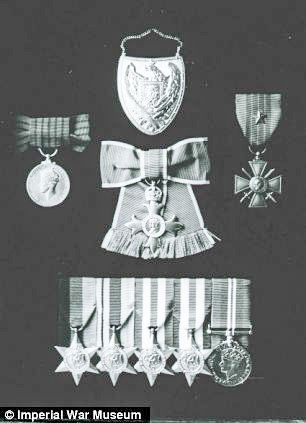
Bond Characters
James Bond: A lot of Fleming and bits and pieces from others he knew and worked with while serving in Naval Intelligence during the war were imbedded in the Bond character. (Most of these people served on Her Majesty’s secret service.) According to Fleming, Bond was “a compound of all the secret agents and commando types I met during the war.”
- The name comes from an author (James Bond) of the ornithology guide, “Birds of the West Indies.”
- Bond shared similar traits as Fleming including the same golf handicap, taste for scrambled eggs, love of gambling, and the use of the same toiletry brands.
- Conrad O’Brien-ffrench (1893−1986): MI6 spy
- Patrick Dalzel-Job (1913−2003): Naval intelligence and commando.
- Wilfred “Biffy” Dunderdale (1899−1999): MI6 station chief in Paris. He was a good friend of Fleming who described him as a man of great charm and savoir-faire. For a man like Biffy, it seems as though the world is not enough.
- Duško Popov (1912−1981): Double agent used by the British to trick Hitler into thinking Pas-de-Calais was the invasion landing site. Popov was known to place large bets on the gambling tables. Fleming once trailed Popov to a casino where the agent used MI6 money to place a huge bet. Fleming sat nearby with a view to kill while all along, Popov knew he had been followed and likely made the bet to impress Fleming.
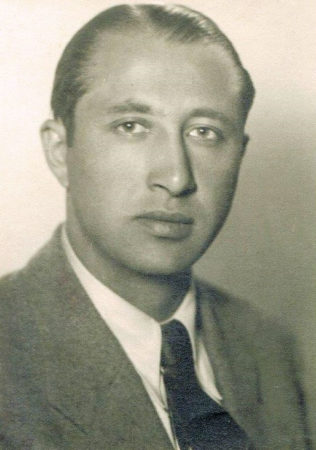
Duško Popov: playboy, gambler, and double agent. Photo by anonymous (date unknown). PD-U.S. government. 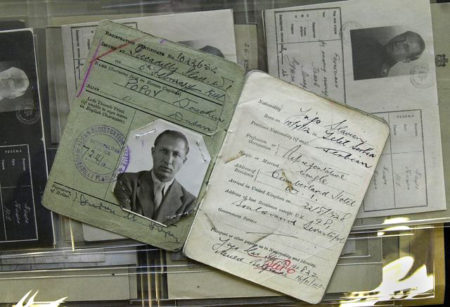
Certificate of Registration for Duško Popov (nom de guerre: Tricycle). Photo by anonymous (date unknown). Tim Ockenden – PA Images. - Sir Fitzroy Maclean (1911−1996): Commando who rose from the rank of private to general; he reported directly to Winston Churchill.
M, Bond’s superior at MI6: Fleming most likely based this character on his boss at British Naval Intelligence, Admiral John Henry Godfrey (1888−1970). Godfrey always thought the literary portrayal was unflattering. Maurice Buckmaster (1902−1992), SOE F-Section leader, has also been given some consideration along with several others.
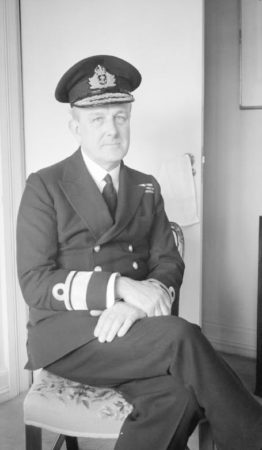
Miss Moneypenny, M’s secretary: The likelihood is that Moneypenny was modeled after two women. The first, Lady Lindsay of Downhill (Loelia Ponsonby), was a good friend of Fleming and is considered the frontrunner for Moneypenny. The second woman is Joan Howe, Fleming’s secretary while he worked at “The Sunday Times” as a journalist. Other possible “contributors” to the character were Vera Atkins (SOE F-Section⏤she worked for Buckmaster), Paddy Risdale (a tough lady who worked as a secret service secretary and often flirted with Fleming with an intent for your eyes only), and Margaret Priestly (she ran a commando unit).
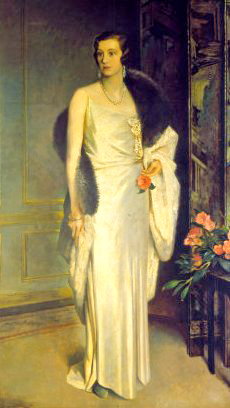

Q, head of “Q” branch, supplying the gadgets for spies: Charles Fraser-Smith invented the ingenious gadgets used by SOE and other intelligence services during World War II. He called them “Q gadgets, or devices” and named them after the Q ships used in World War I (more about Q ships in our next blog). It is likely Fleming based his “Q” character on Fraser-Smith.
007, Bond’s secret agent number: Fleming was a student of espionage history, and he discovered that the British had uncovered an important German diplomatic code used in World War I. It was 0-0-7-0. Fleming dropped the last zero and Bond was awarded a licence to kill.
We will likely never know the exact identities of the persons on whom Fleming based his characters. It’s sort of like, “It is what it is,” or “just live and let die.”
Postwar
Christine Granville was dismissed from active service with one month’s salary and left in Cairo, Egypt without any means of support. She applied for a British passport but that never materialized. (She was later granted the passport.) The British colonial government of Kenya denied her application for a work permit. Christine returned to London where she obtained employment as a telephone operator, salesperson, waitress, and finally, a bathroom steward on an ocean cruise ship. There she met Dennis Muldowney, a steward who worked alongside Christine. Muldowney became obsessed with her, but she eventually put a stop to his attentions. Unfortunately, Muldowney was unstable and could not accept her rejection.
One of the frequent questions about Christine is why she continued to settle for menial jobs after the war when her talents and experience seemed to qualify her for more meaningful employment. I suppose we will never know the real answer.
Returning to London, Christine lived in a room at the Shellbourne Hotel before returning to her work onboard a ship belonging to the Union-Castle Line. (The Shellbourne was used by the Polish Relief Society to provide cheap accommodations for émigrés.) Muldowney had been stalking Christine since her rejection and when she walked into the hotel lobby on the morning of 15 June 1952, Muldowney was waiting for her. He pulled a knife and stabbed Christine to death. The former SOE agent was looking forward to resuming a happier life with Kowerski whom she was to meet that morning. With so many future opportunities, it was no time to die. Three months later, Muldowney was hanged. His last words were, “To kill is the final possession.”
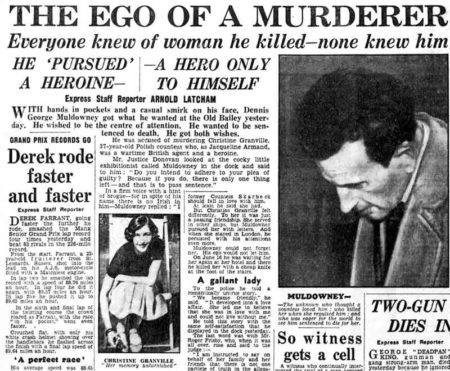
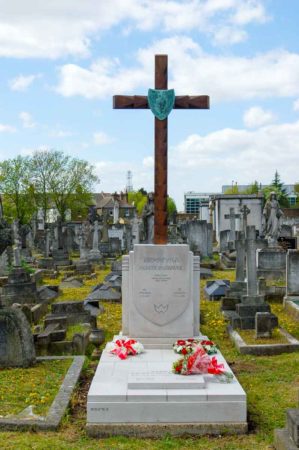
As an agent of SOE and in particular, F-Section, Christine’s exploits would have been known to Ian Fleming. (Some accounts say he had an affair with Christine.) While he never admitted basing the character of Vesper Lynd on Christine Granville, Fleming knew everything about her dangerous yet exciting exploits as an SOE agent. Perhaps Christine’s violent death in 1952 made an impression on Fleming and influenced the story line about Vesper Lynd’s suicide?
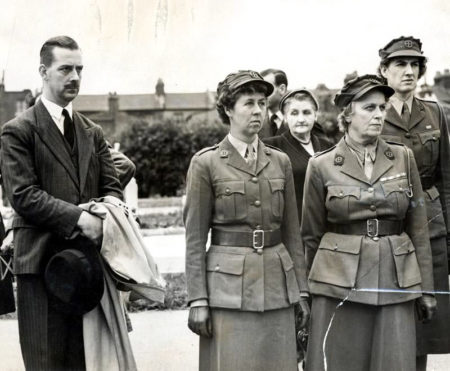
Postscript
Andrzej Kowerski died of cancer in 1988. His ashes are buried at the foot of Maria Krystyna Janina Skarbek’ grave in St. Mary’s Roman Catholic cemetery at Kensal Green, London. The Shellbourne Hotel was purchased by several Polish businessmen in 1971. They found a trunk containing Christine’s clothes, papers, medals, and her SOE dagger and pistol. No one knew Christine’s war background and the details about her exploits as an SOE agent hit everyone like a thunderball. These items as well as her medals are now held by the Polish Institute and Sikorski Museum in Kensington, London.
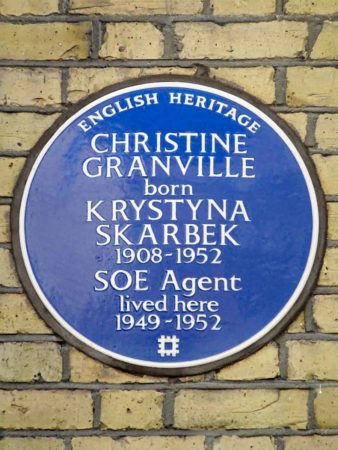

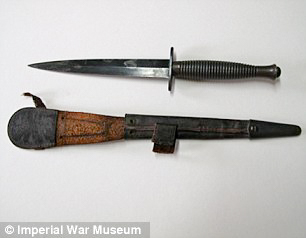
I hope you enjoyed this brief synopsis of James Bond’s lover, real and fiction, as well as an overview of how Fleming created his characters. I’ll likely not return to this subject in the future but then, never say never again.
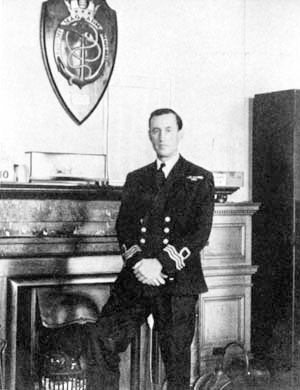
Correspondence and Commentary Policy
We welcome everyone to contact us either directly or through the individual blogs. Sandy and I review every piece of correspondence before it is approved to be published on the blog site. Our policy is to accept and publish comments that do not project hate, political, religious stances, or an attempt to solicit business (yeah, believe it or not, we do get that kind of stuff). Like many bloggers, we receive quite a bit of what is considered “Spam.” Those e-mails are immediately rejected without discussion.
Our blogs are written to inform our readers about history. We want to ensure discussions are kept within the boundary of historical facts and context without personal bias or prejudice.
We average about one e-mail every two days from our readers. We appreciate all communication because in many cases, it has led to friendships around the world.
Next Blog: “The Five Things I Learned in Writing the “Hunt for the Peggy C”
Guest blog by John Winn Miller
(You’ll learn more about Q ships in John’s blog.)
★ Learn More About Christine Granville and 007 ★
Barber, Lynn. Golden Girl, The Life and Times of the Real Miss Moneypenny. London: “The Sunday Express Magazine,” 13 August 1989.
Bresler, Jerry and Charles K. Feldman (Producers). Casino Royale. Famous Artists Productions, 1967. Starring David Niven.
Broccoli, Barbara and Michael G. Wilson (Producers). Casino Royale. Metro-Goldwyn-Mayer, Columbia Pictures, Eon Productions, 2006. Starring Daniel Craig.
Buckmaster, Maurice. They Fought Alone: The True Story of SOE’s Agents in Wartime France. London: Biteback Publishing, Ltd., 2014. Originally published by Odhams, 1958.
Dalzel-Job, Patrick. Arctic Snow to Dust of Normandy: The Extraordinary Wartime Exploits of a Naval Special Agent. Barnsley, U.K.: Pen and Sword Military Publishing, 2003.
Fleming, Ian. Casino Royale. London: Signet Publishing, 1962.
Foot, M.R.D. SOE in France. London: Whitehall History Publishing in association with Frank Cass, 1966.
Jeffrey, Keith. MI6: The History of the Secret Intelligence Service, 1909−1949. London: Bloomsbury Publishing Plc, 2010.
Macintyre, Ben. Double Cross: The True Story of the D-Day Spies. New York: Broadway Books, 2012.
Mulley, Clare. The Spy Who Loved: The Secrets and Lives of Christine Granville. New York: St. Martin’s Griffin, 2014.
Disclaimer:
There may be a chance that after we publish this particular blog, the video links associated with the blog are no longer accessible. We have no control over this. Many times, whoever posts the video has done so without the consent of the video’s owner. In some cases, it is likely that the content is deemed unsuitable by YouTube. We apologize if you have tried to access the link and you don’t get the expected results. Same goes for internet links.
What’s New With Sandy and Stew?
We were asked to join a new web company specializing in book discovery. Shepherd was founded about a year ago by Ben Fox for the purpose of making it easier for readers to search for books they might finding interesting to read. Think of “Goodreads” but an easier process.
Shepherd highlights an author (like me) and one of their books (in our case, it is Where Did They Put the Gestapo Headquarters?). The author is required to review five books in the same genre. (You will see that my five book reviews have to do with the German occupation and French Resistance.) So, if a reader is interested say in cooking, they can drill down and find specific books about cooking that have been reviewed by authors in that category. Very simple.
If you like to read, I highly recommend you visit Shepherd.com. If you do, please let me know what you think and I will forward Ben any suggestions or comments you might have.
Click here to visit Shepherd’s website:
Digging a little deeper, here is the link to our page with my book recommendations:
Click here.
Okay, now an even deeper dive with a link specific to France and books on the occupation:
Click here.
Another approach is to start with Shepherd’s website and by exploring their links, you will end up on the pages I have mentioned above.
Another advantage I see for readers is the ability to converse with the authors. I suspect most of these authors would be considered “self-publishing,” or not affiliated with legacy or major publishing houses. This means the chances of running into an author’s “gate keeper” is pretty low. My experience has been that most of the authors I reach out to are very receptive to answering questions or engaging in a dialogue.
Thank you to all of you who subscribe to our bi-weekly blogs. It seems there isn’t a day that goes by where we don’t increase our readership. Please let your history buff friends and family members know about our blog site and blogs.
Someone Is Commenting On Our Blogs
I’d like to thank Daniel B. for contacting us about our blog, The Nazi Guillotine (click here to read the blog). He enjoyed the blog and said, it “gives one the chills!” Yes, just like all of the atrocities committed by the Nazis.
Catherine T. reached out to us regarding Marie-Madeline Fourcade (click here to read the blog, Noah’s Ark). Catherine is a French teacher, and she is currently studying Fourcade. Hopefully our blogs can add value to her students in the future.
If there is a topic you’d like to see a blog written about, please don’t hesitate to contact me. I love hearing from you so keep those comments coming.
Thank You
Sandy and I appreciate you visiting with us. We have some exciting things on the horizon and we’ll keep you updated as we go along.
Share This:
Follow Stew:
Find Stew’s books on Amazon and iBooks.
Please note that we do not and will not take compensation from individuals or companies mentioned or promoted in the blogs.
Copyright © 2022 Stew Ross

